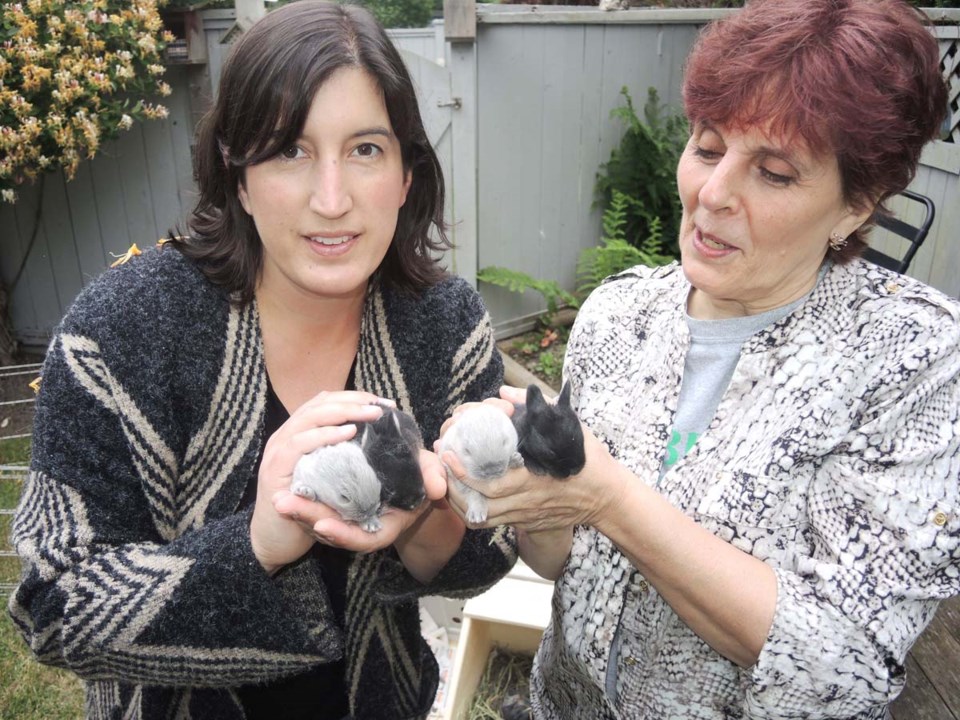The so-called “bunny boom” epidemic in Richmond is not on the agenda at the Invasive Species Council of BC’s annual conference, which comes to town next week.
But that hasn’t stopped a local rabbit rescue charity from sticking its nose in the door, in a bid to get the attention of all concerned.
Rabbitats has, for many years, been at the front line of the fight to curb and contain the proliferation of abandoned pet rabbits and their feral offspring in the city.
Last June, the Richmond News told how a local woman was having to house families of wild rabbits (formerly pets) in her backyard, as the likes of Rabbitats and other local sanctuaries simply couldn’t take any more.
Rabbitats founder Sorelle Saidman hopes that when invasive species experts roll into town Feb. 5 to 7 at the Pacific Gateway Hotel, their eyes might be opened when they see rabbits everywhere.
““The growth over the last decade has been alarming,” said Saidman.
“People have to remember that it only took 50 years for Australia to go from 24 rabbits, imported for hunting, to needing a 3,000 kilometre rabbit proof fence.”
Saidman has been in touch with the conference’s keynote speaker, Andrew Cox, who is the head of the Invasive Species Council of Australia.
“We’ve emailed,” she said. “He wasn’t aware of the growing problem in North America and he is very concerned.”
Rabbitats will be displaying a poster at the event and hosting an information table Feb. 5, answering questions and offering solutions like new responsibilities and bylaws, and sanctuary housing for sterilized rabbits.
“The governments and agencies are not reacting to this issue. The City of Richmond is actually regressing,” she claimed.
“They just released a report outlining options for a new city shelter with space for only eight rabbits. They were housing between 60 and 80 before.”
It’s an oversight that Saidman says is sure to increase abandonment.
“What are people supposed to do? she added.
“They can’t find a place to live with the pet, they can’t surrender the pet to the shelter, they can’t find an adopter, the rescues are unsupported and full.
“The only option is to abandon or euthanize the rabbit. And they’re not going to euthanize their pet.”
Richmond, according to the Rabbitats, has one of the largest stray rabbit populations (if not the largest) in the province with an estimated 2,000 European rabbits loose in the city.
That figure is a “guestimate,” based on a mapping project started a year ago by Rabbitats, which is about to appear on a new website, AbandonedRabbits.com.
The conference will be attended by government staff, environmentalists, academics and other non-profit organizations that Saidman hopes can help with research and project funding to properly address humane control, before the populations become uncontrollable.



